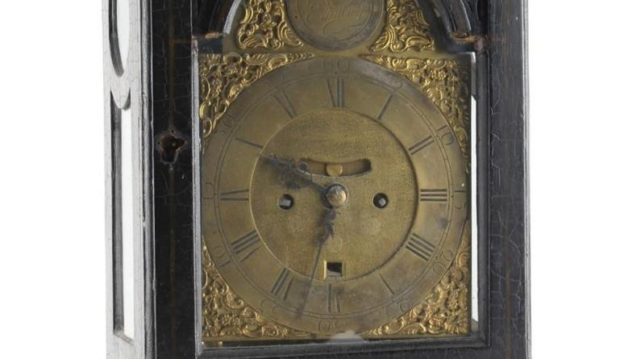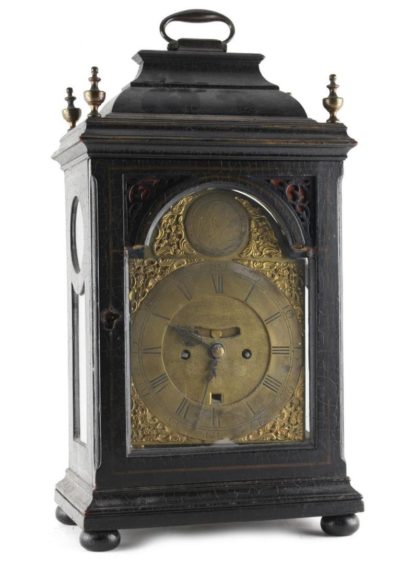It makes me smile when an auctioneer or dealer begins or ends an item’s description with: “property of a gentleman”.
It seems so unnecessary and, frankly – given its anonymity – does not and should not make a whit difference to value or presentability. “From a private collection” would probably suffice to suggest fresh to market.
Such was the case with a good clock at Semley Auctioneers in Shaftesbury, Dorset on September 12.
Described as a table or bracket clock and “the property of a gentleman,” this was a George III timepiece, made in Scotland about 1770.
The ebonised and inlaid case housed an arched brass dial with mock pendulum arch above a calendar aperture. Internally it had an eight-day twin fusee movement striking on a bell.
Some 20 inches high, it was signed in the arch: “Jas. Cowan/Edinburgh”. The back plate was engraved with birds and foliage and further signed: “James Cowan/EDIN”.
Cowan studied in Paris under the celebrated maker Julien Le Roy and was admitted a freeman clockmaker in Edinburgh in 1758. He started in business in Parliament Close two years later. A magnificent specimen of his work is held by the Signet Library in Parliament Square nearby.
The clock was estimated at £400 to £600 and exceeded hopes to take £700.
A decade or two ago, three or four times that figure would have been required to secure a Cowan clock in good condition. Prices for larger timepieces have tumbled – yet you can still hear me whooping every time my longcase and mantle clocks “bong” and “ding” in sync with the BBC radio pips.
No sign of flagging after a combined 400 years – alas, nearly half a millennium if you add me!











